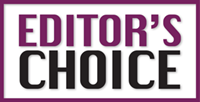
This article reviews the ecology of the sinuses and tries to make sense of the confusing literature on the subject. This covers the details of molecular studies, particularly those which attempt to differentiate normal sinuses from those in patients with chronic rhinosinusitis. The real question is what constitutes a healthy microbial flora ‘community’ compared to an environment which encourages disease. Diverse organisms form the ‘normal’ inhabitants of the paranasal sinuses. Studies show that organisms regarded as ‘pathogenic’ can live happily among other commensals, in the absence of disease, so it is likely to be a question of what constitutes a healthy balance rather than the presence or absence of a particular organism. The concept of disruption of the healthy community of organisms as a precursor or part of the disease process is described. This area needs much more research, since so many of our current therapies are based on a too simplistic approach to the role of micro-organisms in sinus disease. Another paper in the same issue (pages 37-43) describes a particular study into postoperative changes and patient outcomes in relation to the microbial community in the sinuses and complements this review article very well, showing differences in diversity, abundance, prevalence and temporal changes. The journal issue editorial helps to put both papers in context.



